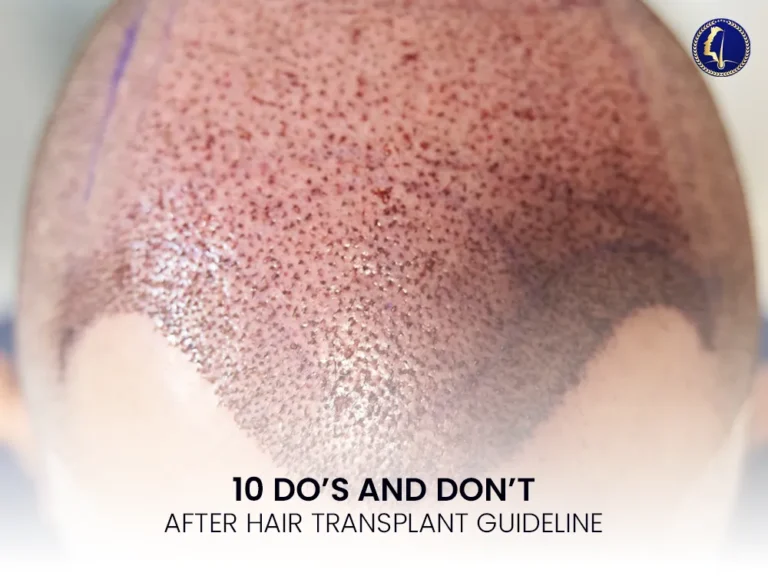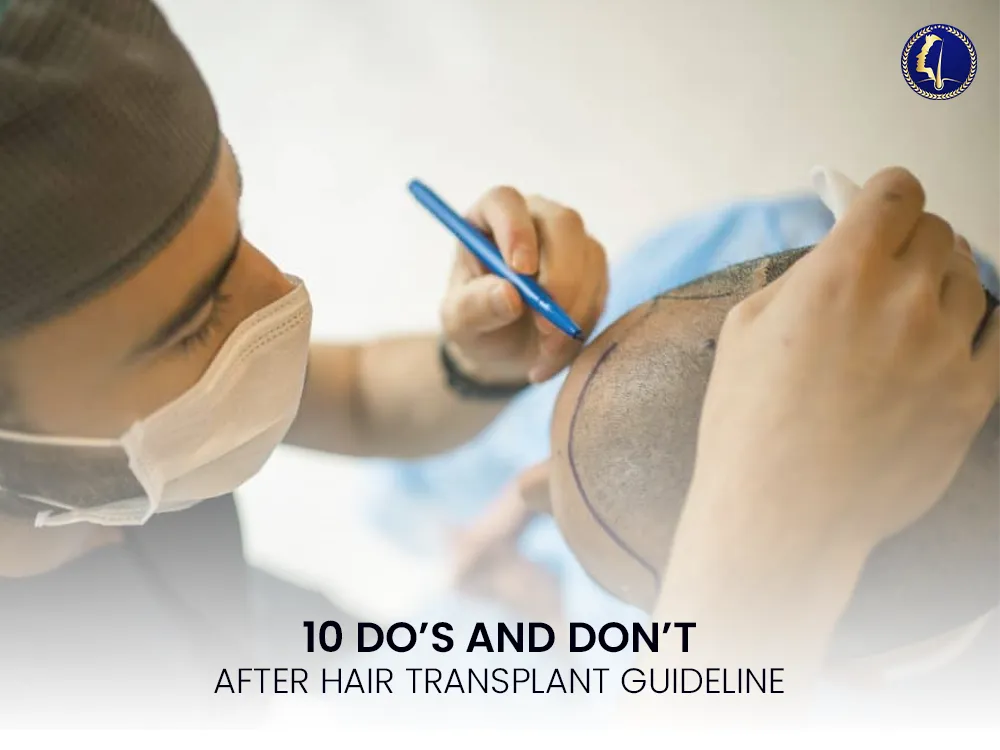Hair transplant is a significant step toward regaining a fuller head of hair, but ensuring its success requires proper post-operative care. Following the right aftercare routine will help prevent complications, promote healing, and maximize the growth of your newly transplanted hair. In this blog, we will discuss essential do’s and don’ts after a hair transplant, providing expert guidance to help you achieve the best results.
Do’s After a Hair Transplant
1. Follow Your Surgeon’s Instructions
Your surgeon will provide you with a set of post-operative guidelines, including medications, washing techniques, and sleeping positions. Adhering to these instructions is critical for optimal recovery.
2. Keep Your Scalp Clean
Although you should avoid washing your hair immediately after the procedure, you can start gentle washing 48 hours post-surgery using a mild, sulfate-free shampoo. This prevents infections and removes dried blood or crusts.
3. Stay Hydrated
Drinking plenty of water aids in faster healing and helps maintain scalp health. Proper hydration promotes nutrient delivery to the transplanted follicles.
4. Sleep in an Elevated Position
For the first few nights, sleep with your head elevated at a 30-45 degree angle to reduce swelling. Using multiple pillows or a recliner chair can help.
5. Take Prescribed Medications
Doctors often prescribe painkillers, antibiotics, and anti-inflammatory medications to reduce discomfort, prevent infections, and control swelling. Take them as directed.
6. Be Gentle with Your Scalp
Avoid touching, scratching, or rubbing your scalp. The newly implanted grafts are delicate and require time to settle.
7. Eat a Nutrient-Rich Diet
Foods rich in vitamins A, C, D, E, iron, and biotin promote hair growth and support tissue repair. Include protein-rich foods like eggs, fish, nuts, and leafy greens in your diet.
8. Protect Your Scalp from Sunlight
Direct sun exposure can damage sensitive scalp tissue and newly implanted follicles. Wear a loose hat or use an umbrella when stepping outside for the first few weeks.
9. Engage in Light Physical Activity
Gentle walking is fine, but avoid strenuous exercises that may lead to excessive sweating, which can increase the risk of infections.
10. Attend Follow-Up Appointments
Regular check-ups allow your doctor to monitor your progress and address any complications that may arise.
Don’ts After a Hair Transplant
1. Avoid Smoking and Alcohol Consumption
Nicotine and alcohol hinder blood circulation and slow the healing process, potentially affecting graft survival. It’s best to avoid them for at least two weeks.
2. Do Not Scratch or Pick at Your Scalp
Itchiness is common, but scratching can dislodge grafts and lead to infections. If irritation persists, consult your surgeon.
3. Refrain from Intense Exercise
High-intensity workouts, weightlifting, and running should be avoided for at least two weeks. Sweat can lead to bacterial growth and disturb healing follicles.
4. Avoid Direct Sun Exposure
Sunburn can severely damage newly transplanted hair follicles. Stay out of the sun for at least four weeks or wear protective headgear.
5. Don’t Wash Your Hair Too Soon
Washing your hair within the first 48 hours can disturb the grafts. Always follow your surgeon’s timeline for shampooing.
6. Stay Away from Chemical Hair Products
Hair gels, sprays, dyes, and harsh shampoos should be avoided for at least a month. Opt for mild, doctor-recommended hair care products.
7. Do Not Rub Your Head with a Towel
Instead of rubbing, gently pat your scalp dry with a soft towel or allow it to air dry to avoid damaging the grafts.
8. Avoid Wearing Tight Hats or Helmets
Wearing tight-fitting headgear can put pressure on the grafts, causing them to shift or fall out. Opt for loose caps when necessary.
9. Refrain from Swimming
Chlorine in swimming pools and bacteria in natural water bodies can cause infections. Avoid swimming for at least four weeks post-surgery.
10. Don’t Stress
Stress can contribute to hair loss and slow recovery. Engage in relaxation techniques such as meditation and breathing exercises to stay calm during the healing phase.
FAQs About Hair Transplant Aftercare
1. When Can I Resume Normal Activities?
Light activities can be resumed within a few days, but strenuous physical exertion should be avoided for at least two weeks. Your doctor will provide specific timelines based on your case.
2. How Long Does It Take for Hair to Grow After a Transplant?
Initial shedding occurs within 2-4 weeks, which is normal. New hair growth typically starts in 3-4 months, with significant improvement seen after 6-12 months.
3. Can I Use Hair Oil After a Hair Transplant?
Oils should be avoided for the first month, as they may clog hair follicles and interfere with healing. After that, consult your doctor for recommendations on suitable hair oils.
4. Is It Normal to Experience Swelling and Redness?
Yes, mild swelling and redness are common and usually subside within a few days. Using prescribed anti-inflammatory medication and sleeping with an elevated head position can help reduce these symptoms.
5. What Should I Do If I Notice Excessive Hair Shedding?
Shedding of transplanted hair (shock loss) is normal in the first few weeks. However, if shedding persists beyond three months, consult your doctor to rule out underlying issues.
Conclusion
Following the right post-hair transplant care is crucial for achieving optimal results. By adhering to these do’s and don’ts, you can ensure a smooth recovery process and improve the chances of successful hair growth. Always consult your surgeon for any concerns or doubts during your healing journey.








